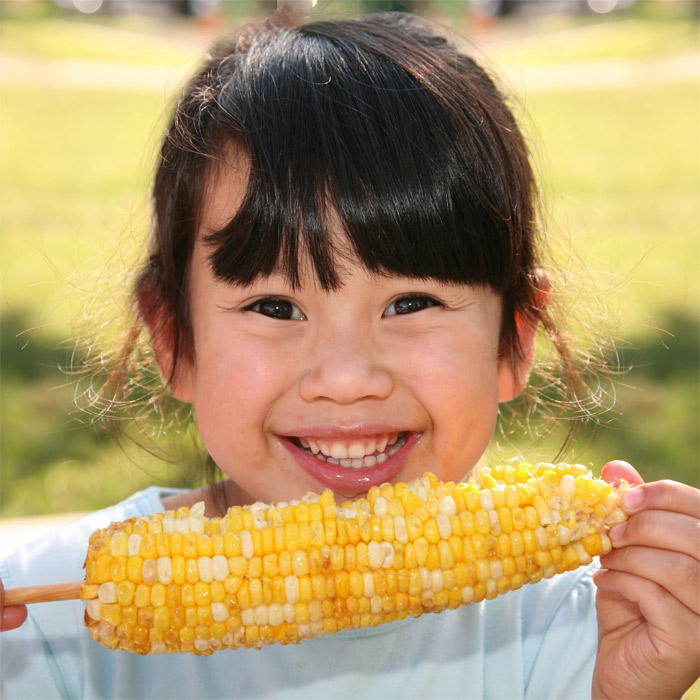
Please call us to find out about our services.
 856-691-2497
| Fax 856-692-9007
856-691-2497
| Fax 856-692-9007

Corn originated in ancient Mexico thousands of years ago, cultivated by indigenous peoples who appreciated its value as a dietary staple. Initially, corn appeared much smaller and tougher, requiring careful cultivation to develop into today's sweet corn varieties. Native American groups developed cooking methods suited to corn's qualities, leading to traditions like roasting corn on open fires. Corn quickly became central to diets and cultures throughout the Americas.
European explorers encountered corn and introduced it worldwide. Its easy cultivation and appealing taste quickly made it popular globally. Corn on the cob emerged as a simple, tasty preparation method that highlighted the sweet freshness of corn. Through centuries, cooking corn on the cob has persisted, reflecting simplicity and connection to harvest traditions.
Selecting the right corn makes a significant difference. Sweet corn varieties work best for corn on the cob, featuring high sugar content and tender kernels. Yellow sweet corn has classic sweetness and vibrant color. White sweet corn tastes slightly milder, with delicate sweetness. Bi-color sweet corn, combining yellow and white kernels, provides balanced flavor and attractive appearance.
Freshness matters significantly when choosing corn on the cob. Look for ears with green, tightly wrapped husks, and moist, fresh silk at the top. Kernels should feel plump and firm beneath the husk. Avoid corn with dry husks or brown, brittle silk, signs of older corn losing sweetness and moisture.
Several methods produce tasty corn on the cob, each with distinct advantages:
Grilling corn brings out caramelized sweetness. Keep husks on while grilling for a smoky flavor, removing husks afterward to enjoy juicy kernels. Or remove husks first for direct grill marks and quicker cooking. Rotate corn regularly to ensure even cooking and avoid burning.
Boiling corn is quick and simple. Husk the corn, place ears into boiling water, and cook briefly until kernels become tender. Avoid overcooking, as it can make kernels tough or mushy.
Steaming corn maintains nutrients and moisture, resulting in tender kernels. Using a steamer basket over boiling water, steam corn until crisp-tender, keeping the sweet taste intact.
Microwaving provides a fast method when time is limited. Keep the husk intact, microwaving each ear for several minutes. Husk and silk slide off easily after microwaving.
Roasting corn in the oven works well indoors. Wrap husked ears in foil and roast until kernels feel tender. Oven roasting concentrates sweetness, highlighting corn's natural flavor.
Air frying recently emerged as a convenient method. Place husked ears in the air fryer, cooking at high heat for juicy kernels and appealing texture.
Corn on the cob tastes delightful plain, but various toppings and seasonings make it more interesting. Traditional butter and salt combination remains a favorite, adding richness and enhancing sweetness. For extra flavor, season butter with herbs like basil, thyme, or parsley.
Cheese also pairs beautifully with corn on the cob. Crumbled feta or grated Parmesan provides savory contrast to sweetness. Lime juice and chili powder sprinkled onto hot corn gives a refreshing, zesty twist.
For adventurous palates, a brush of mayonnaise topped with spices and grated cheese creates a Mexican-style street corn. Simple herb-infused olive oils brushed onto hot corn offer another flavorful possibility.
Presentation enhances enjoyment of corn on the cob. Serving hot ears of corn individually wrapped in parchment paper or foil keeps them warm and easy to handle. Corn skewers or holders prevent messy fingers and simplify eating hot corn.
For picnics or outdoor events, setting up a toppings station allows guests to customize their corn. Provide choices like butter, cheeses, spices, lime wedges, and fresh herbs. This approach adds fun and encourages creativity without extra work.
Cutting corn cobs into smaller sections offers another convenient serving option, especially for kids. Smaller pieces make handling easier, avoiding waste and simplifying cleanup.
Proper preparation ensures flavorful, appealing corn on the cob. Avoid boiling corn too long, which toughens kernels. Corn requires only a few minutes of boiling to reach perfect tenderness.
Grilling requires close attention, as corn burns easily. Frequent turning helps prevent scorching and keeps kernels evenly cooked. When microwaving, never overcook, as kernels quickly turn tough or dry.
Another common mistake is seasoning too late. Season corn immediately after cooking, while hot, allowing flavors to penetrate kernels effectively. Waiting too long allows corn to cool, making toppings less effective.
Overlooking husk condition also impacts flavor. Remove dry or damaged outer husks before cooking, ensuring kernels cook evenly and maintain moisture. Fresh, tight husks better protect kernels during grilling or microwaving.
Corn on the cob continues bringing joy through its simplicity, deliciousness, and adaptability. Proper selection, cooking techniques, flavorful enhancements, thoughtful presentation, and careful avoidance of mistakes help ensure corn on the cob remains a summer favorite.